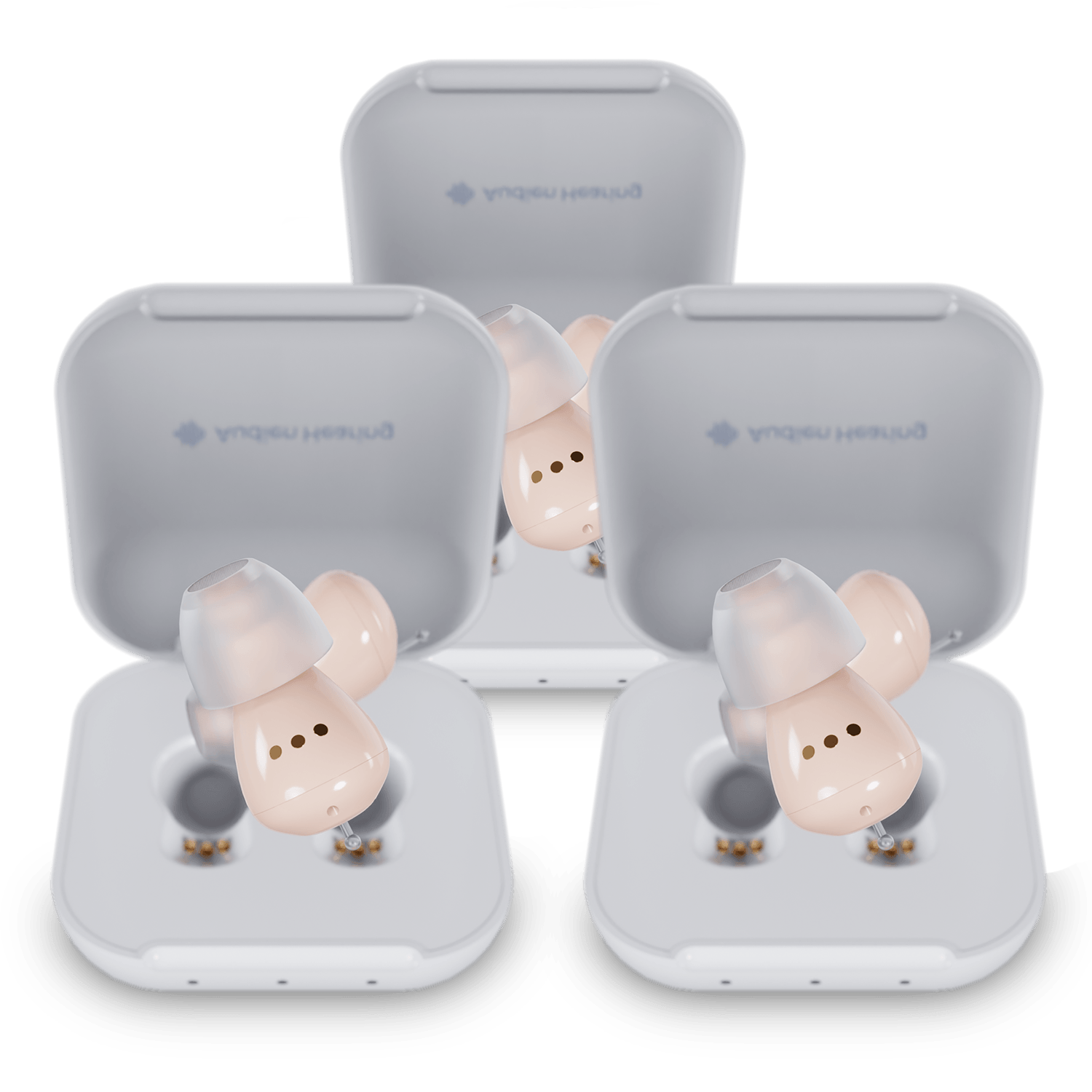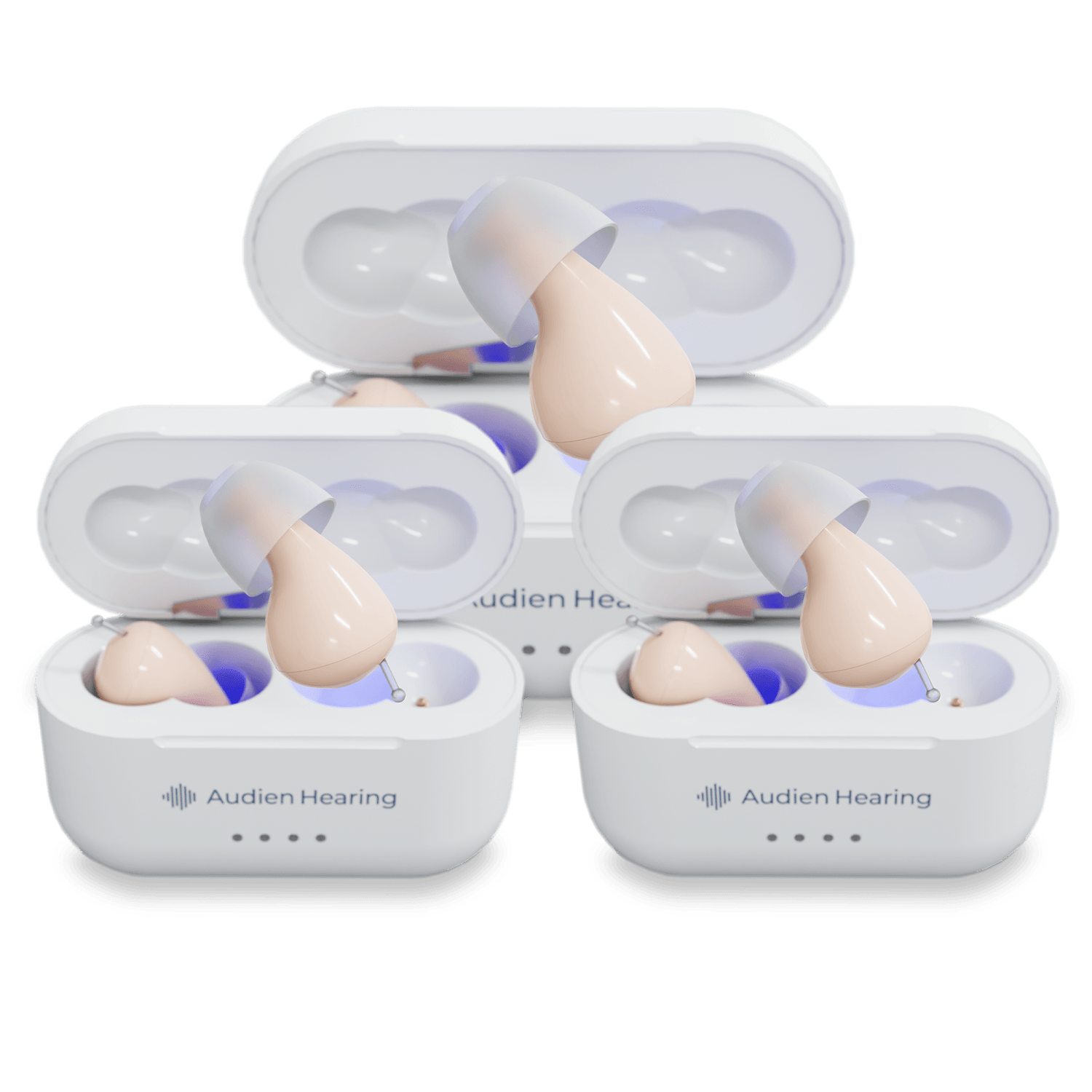Hyperacusis is a condition that causes individuals to have heightened sensitivity to the intensity of sounds. Essentially those with hyperacusis find noises that others would consider at a normal volume to be unbearably loud.
Hyperacusis is frequently confused with misophonia. Unlike misophonia’s unease caused by certain sounds like nails on a chalkboard, hyperacusis is a condition where any sound is able to cause discomfort and even pain.
Hyperacusis is a condition that can be incredibly difficult to live with. Just imagine going outside, and most sounds you hear feel as if they are at the same volume as a gunshot or another unbearably loud sound. Normal everyday tasks like going to the grocery store can become a dreadful experience for those with hyperacusis.
The impacts of hyperacusis can be far-reaching. This hearing disorder can have negative impacts on your physical, mental, and social wellbeing. The unfortunate truth about hyperacusis is that there is no quick and easy cure. Despite this, there are other treatments that, over time, can help and even have the potential to allow people to get back to a sense of normalcy.
Below is a closer look at hyperacusis, its potential causes, and the treatment options available for hyperacusis.
Potential Hyperacusis Causes

Hyperacusis is a unique hearing disorder, and as such, only a small subset of people develop hyperacusis in their lifetime. The relatively low prevalence makes the disorder somewhat challenging to study. As a result, hyperacusis is nowhere near as well studied as hearing issues such as hearing loss or tinnitus.
The vast majority of those with hyperacusis at one time had normal hearing and perceptions of noise levels, and these individuals are left wondering what caused their hearing perception to change.
Below is a closer look at some potential factors that may contribute to hyperacusis or have an association with hyperacusis. There is still a lot that is not fully understood when it comes to hyperacusis, but this could give you an idea of the things that have shown an association with hyperacusis.
Loud Noise
One of the strongest correlations to be pointed to as a potential cause of hyperacusis is exposure to loud noise. Typically the noise is severe enough to cause some degree of hearing damage or hearing-related trauma.
The noise-induced hearing damage can either occur as a result of something like repeated and prolonged exposure to loud concerts or a short and extreme sound like a firecracker at close range.
One instance of loud noise causing hyperacusis that is well documented was a girl named Cindy Redmond. Cindy had normal hearing until an air horn was blown almost directly into her ear.
Air horns are extremely loud, plus paired with the closer range, and it is easy to see how this could cause damage to the ears. In the days following the loud noise exposure, Cindy noticed that things sounded off. Eventually, it became difficult to deal with normal everyday sounds.
Cindy’s story garnered a ton of national attention to hyperacusis, which was otherwise a condition that many people were completely unaware of. Unfortunately for Cindy, this resulted in a condition that required her to be pulled out of traditional school. It changed many aspects of her day-to-day life.
Aging
Another thing that appears to be potentially linked with hyperacusis is age. Age is one of the most common factors when it comes to a number of different hearing conditions. Conditions like hearing loss, tinnitus, and hyperacusis all seem to have some degree of relation to getting older.
The main reason for this is that as you increase in age, the number of different sounds that your body has been exposed to increases. In simpler terms, by increasing in age, your ears have essentially had a longer run time than someone that is younger. This can result in the form of wear and tear on the ears.
Facial Nerve Paralysis
The ear is incredibly complex, and while loud noises can cause damage to the ear, the body has a means of minimizing this damage. The middle ear contains tiny bones that help to transfer vibrations to the inner ear. These bones are attached to the eardrum, which creates the vibration, but it is also connected to small muscles.
The muscle of the middle ear is known as the tensor tympani muscle, and they are able to contract and reduce the conduction of loud noises to the middle ear by dampening the movement of the inner ear bones. The body has an automatic response to loud noises known as the auditory reflex, and it can help to reduce the perception of loud noises.
One potential cause of hyperacusis could be a malfunction of this reflex. A condition that impacts the nerves of the face, such as facial paralysis, could interrupt this reflex and cause noises to seem louder than they would if you had an intact auditory reflex.
Head Injury
Head injuries are something that can have drastic and large impacts on your overall health, depending on the severity and type of head injury. After a head injury, some people can suffer from hyperacusis, tinnitus, and even hearing loss.
Many people associate hearing with just the ears. While the ears enable your body to sense sounds in your environment, hearing is also heavily reliant on neural processing in the brain. The auditory nerve and auditory cortex play critical roles in sound perception. So, head injury could cause damage to these areas and contribute to hearing conditions like hyperacusis.
Things To Avoid with Hyperacusis
When you have a hypersensitivity to the volume of everyday sounds, there are a number of things that you may instinctively try to attain some relief.
Many of the common methods include using earplugs and self-isolating yourself from others. While these may help to some degree in the short term, they can contribute to a decline in wellbeing and could even make hyperacusis more severe.
Here is a closer look at the things you should try to avoid if you have hyperacusis.
Constant Ear Plug Use
For those that have hyperacusis, it can be difficult to have a sense of autonomy and get on with their day. Many utilize hearing protection while out in public to help reduce the volume of noises that can reach their ears.
Earplugs and earmuffs can be an effective short-term solution to getting out and about, but their use should be limited. A large part of many forms of hyperacusis is that the brain is misinterpreting the volume of sounds. If you continuously are wearing earplugs, you aren’t allowing your brain to relearn what an appropriate sound level is.
Persistent use of earplugs can actually habituate your brain into perceiving more sounds as intolerable over time. Much like if you were to spend months in a dimly lit room, your eyes would likely hurt being exposed to direct sunlight. This can occur in a similar fashion to your ability to hear.
Isolation
Another coping mechanism that many people with hyperacusis adopt is self-isolation. When you constantly are dealing with intolerable noises, the easiest method for reducing pain is reducing the chances of coming into contact with these noises. As a consequence, people withdraw themselves from social events.
Isolation can lead to loneliness and many negative mental health issues like depression and anxiety. If you have hyperacusis, you should try to still have enriching experiences to limit the impacts of hyperacusis on your social and mental wellbeing.
Hyperacusis Treatments

Hyperacusis is a disorder that unfortunately has no quick and easy treatment available — the main forms of treatment focus on habituating the brain to perceive normal sound volumes. There are techniques helping you to live with the condition.
Below is a closer look at the most utilized treatments for hyperacusis and what they entail.
Cognitive Behavioral Therapy
A popular treatment option for many hearing conditions without a definite cure is Cognitive Behavioral Therapy (CBT). CBT is utilized in the treatment of severe tinnitus, but it can also be utilized to help with hyperacusis.
Cognitive-behavioral therapy aims to change the way you perceive and view your condition to allow you a better standard of living. An example of an exercise with CBT would be a therapist in a controlled environment playing a sound that may be unpleasant.
Then, they would help the patient to simply observe the sound and move past it rather than dwelling on it and thinking about how terrible the sound is. This therapy can take months to see any benefit, but it could help to allow a more normal life for those with hyperacusis.
Desensitization
Another method known as desensitization therapy could help some individuals with hyperacusis. Essentially with this therapy, white noise is played at a volume that is at the cusp of uncomfortable.
The individual may wear a device similar to a hearing aid that plays this noise throughout the day. As time goes on, the volume is slowly increased until the individual is able to perceive sounds normally again.
Treatments and Techniques
There is still much to be learned about hyperacusis and its underlying mechanism. Without a definite cure, the best actions you can take are to avoid risk factors like loud noise exposure or deal with the condition through targeted therapies.
Sources
Hyperacusis - StatPearls | NCBI
Characteristics of Hyperacusis in the General Population | NCBI
Help Find a Cure for Cindy's Air Horn Injury! | Hyperacusis Research
Cognitive behavioral therapy: How does CBT work? | Medical News Today













